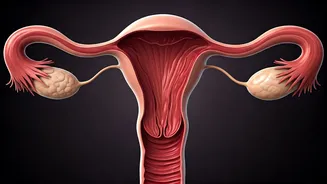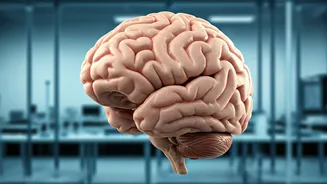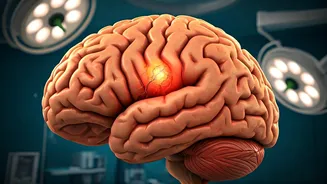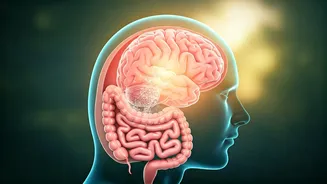Understanding Endometriosis
Endometriosis happens when tissue, similar to the lining of the uterus (the endometrium), grows outside of it. This misplaced tissue can then be found
on the ovaries, fallopian tubes, the outer surface of the uterus, and other areas within the pelvic cavity, sometimes even extending to other organs. The tissue behaves much like the uterine lining, thickening, breaking down, and bleeding during the menstrual cycle. This can lead to various symptoms. The exact cause of endometriosis remains a topic of ongoing research, but several theories exist. These include retrograde menstruation, where menstrual blood flows back through the fallopian tubes and into the pelvic cavity; transformation of cells, where cells outside the uterus transform into endometrial-like cells; and issues with the immune system, where the body struggles to recognize and eliminate endometrial-like tissue outside the uterus. Other factors, such as genetics, may also play a role in the development of endometriosis.
Symptoms and Diagnosis
The symptoms of endometriosis vary greatly, and the severity does not always correlate with the extent of the disease. Common symptoms include painful periods (dysmenorrhea), heavy menstrual bleeding (menorrhagia), and chronic pelvic pain. Pain may also be experienced during or after sex (dyspareunia), during bowel movements, or when urinating. Infertility is another potential consequence of endometriosis, as the condition can affect the structure and function of the reproductive organs. Diagnosis typically involves a combination of factors. The medical history and a physical examination can provide initial clues. Imaging tests, such as ultrasound or MRI, may be used to identify cysts or other abnormalities related to endometriosis. Laparoscopy, a minimally invasive surgical procedure, is the definitive method for diagnosing endometriosis. This involves making small incisions in the abdomen, inserting a laparoscope (a thin, lighted tube with a camera), and visualizing the pelvic organs to identify and, if necessary, biopsy any endometrial tissue.
When Surgery is Needed
Surgical intervention is often considered when medical treatments fail to alleviate symptoms or when the condition leads to complications like infertility or the formation of large cysts (endometriomas). There are different surgical approaches. Laparoscopy is the most common method, allowing surgeons to remove or ablate (destroy) endometrial tissue. In some severe cases, a hysterectomy (removal of the uterus), sometimes with the removal of the ovaries and fallopian tubes (salpingo-oophorectomy), may be considered, although this is usually a last resort, as it leads to permanent infertility and hormonal changes. The decision to undergo surgery depends on various factors, including the severity of symptoms, the patient's desire for future fertility, and the response to other treatments. Post-surgery, pain can be reduced, and the chances of pregnancy can be increased. However, endometriosis can recur, even after surgery. Hormone therapy may be needed to manage symptoms and prevent the condition from returning.
Life After Surgery
Life after endometriosis surgery can bring significant improvements for many women. Many report a decrease in pain, an improvement in their quality of life, and the potential to conceive if fertility was a concern. The recovery period varies depending on the extent of the surgery. Most women undergoing laparoscopy can return to their usual activities within a few weeks. Managing expectations is critical. While surgery can alleviate symptoms, it may not be a complete cure, and the condition can return. Regular follow-up appointments with a healthcare provider are essential to monitor for any recurrence of symptoms. Hormone therapy may be prescribed to help manage symptoms and lower the risk of recurrence. Support groups and counseling can provide valuable emotional support and help women cope with the physical and emotional challenges associated with endometriosis. Living with endometriosis is possible, with proper treatment and care.
Looking Ahead
Research into endometriosis continues, with scientists seeking to understand the underlying causes and develop more effective treatments. New medications and surgical techniques are constantly being explored. Early diagnosis and treatment are essential for improving outcomes and managing the condition. Awareness is increasing, and it is playing a vital role in ensuring that women receive the support and care they need. Several factors contribute to this. Improved awareness among both the medical community and the general public, leading to earlier diagnosis and intervention, can lead to the best outcomes. Research is ongoing, with researchers working to understand the disease, and develop more effective therapies and treatment options. These treatments aim to manage symptoms, reduce the risk of recurrence, and improve the quality of life for those living with endometriosis. Endometriosis is a complex condition, but with ongoing research, early diagnosis, and effective management, women with endometriosis can experience significant improvements in their quality of life.











